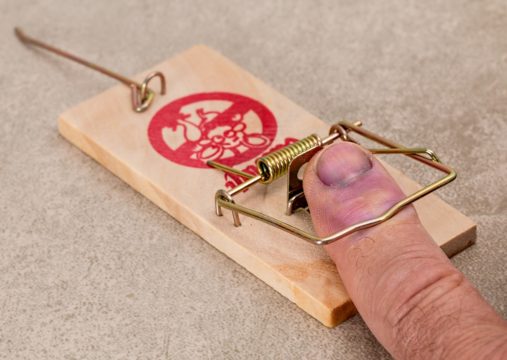Note from Steven: This is a guest post from Lisa, an experienced Development Director who is on the Better Fundraising team.
It was a typical nonprofit workday when my boss walked into my office. He had a direct mail piece in his hand. It was from a non-profit he supported. He gave it to me and said . . .
“I like this. I bet it brought in a lot of money. Don’t you think we should do something like this?”
Uh-oh.
Has this happened to you? Speaking as someone who’s been in your seat; if it hasn’t happened yet, it will soon!
The next day my boss came in again and shared an idea for a fundraising project. The idea had been brought to him by a board member. Like the direct mail piece, it was for a different kind of non-profit and audience. He said it raised a lot of money and asked me that same question, “Don’t you think we should do it?”
Feeling the pressure and wanting to please my boss, I caved in. Within a few weeks my team and I were neck deep into the new project. We didn’t have the time or the resources needed to execute it properly – but by then we were too far along to stop.
When we finished we were all exhausted. And as you may have guessed, it didn’t make any money. Plus in our efforts to see the project through, we weren’t able to get to our regular work. So we missed deadlines and lost revenue.
Here’s what I learned:
Know what works for your organization. Then do it again, again, and again
Or as we say here at Better Fundraising, Repeat, Repeat, Repeat. You’ve spent time and money in the past figuring out what your donors like and don’t like. For me, in every case I can remember, I’ve raised more money by doing another of what the donor’s responded to instead of trying something new.
Jim and Steven tell me they see this all the time – organizations who have successful tactics but replace them (or only use them once a year) because they think their donors will get tired of them. I can tell you from experience that so much time and money is wasted doing this!
How To Try New Tactics
Don’t get me wrong, I like trying new things but NOT at the expense of my staff and NOT if it puts ongoing successful fundraising projects in jeopardy.
So here’s how I ended up running things. If we wanted to try something new, we did our research, planned, and put it in the next year’s budget. In the meantime, we repeated what worked well for us in the past and we did it more than once. For example, we had a Thanksgiving letter that always worked great. So instead of trying something new, we sent two Thanksgiving letters the next year. It worked great.
The Two Big Lessons
- It’s very risky to replace a tried-and-true fundraising tactic with something new. Know how much revenue is at risk when you make the decision!
- If you did something that really worked with your donors, figure out how to use the same concept twice the following year. I should note that this doesn’t really go for events, but it has worked for me more times than I can count in the mail, email, and major donor proposals!
Steven Screen is Co-Founder of The Better Fundraising Company and lead author of its blog. With over 30 years' fundraising experience, he gets energized by helping organizations understand how they can raise more money. He’s a second-generation fundraiser, a past winner of the Direct Mail Package of the Year, and data-driven.








Hi, wish you had not used direct mail as a sample, so many people are questioning that right now and they think it’s all going to come from the digital channel or the next new shiny thing…
last year 7% of donations came in online. Yes, it’s growing but 93% still came in from offline and direct mail is a big driver to go online.. just saying!
cheers, erica
Hi Erica! You’re right, that the distraction was direct mail piece is an unfortunate part of the story. But I’m with you and know the same stat: in 2015, according to Blackbaud, 93% of donations in the US came in offline. Of course online is growing (at 12% to 15% per year), but direct mail is still the main revenue engine for most charities. The people who are questioning direct mail’s effectiveness, in my experience, haven’t had the good fortune of working with a really good direct mail program. We helped one client increase their revenue 49% at year-end last year just by doing the mail better!
All of this is to say, we agree with you. Our clients love the mail and so do we. Cheers to you and all that you do for nonprofits!